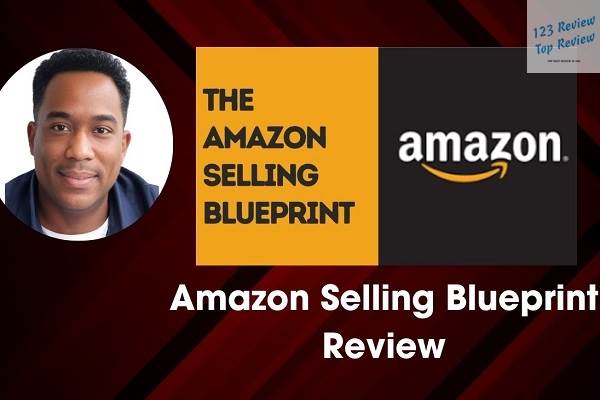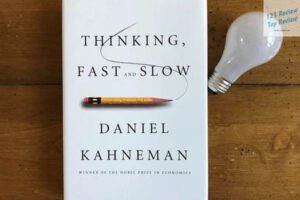With countless resources available, it can be challenging to discern which ones provide the most value.
In this article, 123 Review delves into some of the best books on selling on Amazon, offering detailed reviews and insights for both beginners and seasoned sellers.
Understanding the Essentials of Selling on Amazon
Key Concepts Every Seller Should Know
Before diving into the vast world of Amazon selling, it is crucial to grasp the foundational concepts that govern this marketplace. One must understand the structure of Amazon’s seller fees, which include referral fees, closing fees, and variable costs depending on the product category. Equally important is mastering the art of product listings—crafting compelling titles, bullet points, and descriptions that can convert browsers into buyers. Lastly, impeccable customer service is non-negotiable, as it directly impacts seller ratings and, ultimately, sales performance.
Terminology Used in Amazon Selling
Amazon selling is rife with specific terminology that can be bewildering to newcomers. Terms like FBA (Fulfillment by Amazon), BSR (Best Sellers Rank), and PPC (Pay-Per-Click) are part of the everyday lexicon. FBA refers to a service where Amazon handles storage, packaging, and shipping for sellers, while BSR indicates a product’s popularity within its category. PPC is an advertising model where sellers pay each time their ad is clicked. Understanding these terms is essential for effective communication and strategic planning within the Amazon ecosystem.
The Importance of Research in Selling
Research is the backbone of a successful Amazon business. It involves analyzing competitors, identifying market trends, and selecting the right products. Tools like Jungle Scout and Helium 10 can facilitate product research by providing data on sales volume, competition, and profit margins. Market research helps sellers understand customer preferences and identify niches with high demand and low competition.
How Amazon’s Algorithm Works
Amazon’s search algorithm, known as A9, plays a pivotal role in determining product visibility. This algorithm considers factors such as keyword relevance, sales performance, customer reviews, and pricing. Sellers need to optimize their product listings by incorporating relevant keywords, maintaining competitive pricing, and encouraging positive reviews to improve their rankings in search results.
Common Mistakes New Sellers Make
New sellers often fall into common traps that can hinder their success. Choosing the wrong products, underestimating costs, neglecting customer service, and failing to comply with Amazon’s policies are some of the frequent mistakes. Avoiding these pitfalls requires careful planning, ongoing education, and a willingness to adapt to the dynamic marketplace.
Top Books for Beginners in Amazon Selling
Amazon Selling Blueprint by Scott Voelker
Scott Voelker’s Amazon Selling Blueprint is a comprehensive guide tailored for beginners. The book starts with the basics, explaining how to set up an Amazon seller account and choose the right selling plan. Voelker emphasizes the importance of selecting profitable products and provides detailed strategies for product research. His step-by-step approach covers everything from creating effective listings to managing customer service and handling returns. Voelker’s practical advice and actionable tips make this book an invaluable resource for new sellers looking to establish a strong foundation.

How to Sell on Amazon by Owen Hill
Owen Hill’s How to Sell on Amazon offers a step-by-step guide through the entire process of Amazon selling. Hill breaks down complex concepts into easy-to-understand instructions, making it accessible for beginners. The book covers key topics such as setting up your seller account, sourcing products, optimizing listings, and using Amazon’s FBA service. Hill also shares insights on marketing and advertising, providing a well-rounded overview of what it takes to succeed on Amazon.
Selling on Amazon by Manny Coats
Manny Coats’ Selling on Amazon provides a wealth of actionable strategies and tips for new sellers. Coats draws from his own experiences and success in Amazon selling, offering practical advice that can be applied immediately. The book focuses on critical areas such as product research, listing optimization, and customer service. Coats also addresses common challenges faced by new sellers and provides solutions to overcome them.
FBA: Building an Amazon Business by Ged Cusack
Ged Cusack’s FBA: Building an Amazon Business is an excellent resource for those interested in leveraging Fulfillment by Amazon (FBA). Cusack explains the advantages of FBA, such as reduced shipping costs and increased customer trust. The book provides a step-by-step guide to setting up an FBA account, selecting products, and managing inventory. Cusack also offers insights into advanced strategies for scaling an FBA business, making it suitable for both beginners and more experienced sellers.
Product Research 101 by Renae Clark
Renae Clark’s Product Research 101 focuses on the critical aspect of product research. The book provides tools and techniques for identifying profitable products to sell on Amazon. Clark emphasizes the importance of understanding market demand, analyzing competitors, and using data-driven decision-making. The practical advice and detailed examples make this book a valuable resource for anyone looking to master product research.
Advanced Strategies for Experienced Sellers
The Amazon Sales Formula by Michael D. Marani
Michael D. Marani’s The Amazon Sales Formula offers advanced strategies for scaling your Amazon business. Marani covers topics such as advanced marketing techniques, optimizing your sales funnel, and leveraging Amazon’s advertising tools. The book also delves into data analytics and how to use it to make informed decisions. Marani’s insights are backed by real-world examples and case studies, providing a practical guide for experienced sellers looking to take their business to the next level.
Selling On Amazon: How You Can Make a Full-Time Income by Brian Patrick
Brian Patrick’s book provides insights into building a full-time income through Amazon selling. Patrick shares his own journey and the strategies he used to achieve success. The book includes advanced tactics for increasing sales and profitability, such as optimizing pricing strategies, improving customer service, and expanding product lines. Patrick also discusses the importance of building a brand and maintaining a strong reputation on Amazon.
The Kindle Publishing Bible by Tom Corson-Knowles
For those interested in Kindle publishing, Tom Corson-Knowles’ The Kindle Publishing Bible is a must-read. Corson-Knowles covers everything from writing and publishing to marketing your Kindle books on Amazon. The book provides detailed instructions on formatting, cover design, and creating compelling book descriptions. Corson-Knowles also shares marketing strategies to boost sales and increase visibility, making it an essential resource for aspiring Kindle authors.
FBA: Building an Amazon Business by Ged Cusack
Ged Cusack’s book reappears in this section for its advanced insights into FBA. Cusack delves deeper into strategies for maximizing your FBA business’s potential. The book covers advanced inventory management techniques, optimizing product listings, and using Amazon’s advertising tools to drive traffic. Cusack also provides tips on scaling your business and managing growth effectively.
Advanced Selling Strategies for Amazon
This section includes a compilation of advanced selling strategies, focusing on scaling your business, improving conversion rates, and leveraging data analytics for better decision-making. Topics covered include optimizing PPC campaigns, utilizing Amazon’s A/B testing features, and advanced keyword research techniques. The strategies provided are designed to help experienced sellers refine their approach and achieve sustained growth.
Niche Marketing: Finding Your Selling Space
Identifying Profitable Niches
Finding a profitable niche is crucial to standing out on Amazon. This involves conducting thorough market research to identify niches with high demand and low competition. Tools like Jungle Scout and Helium 10 can help analyze market trends and competitor performance. Identifying gaps in the market and understanding customer needs can lead to discovering lucrative niches.
Books Focused on Niche Selling
Several books focus specifically on niche selling strategies. These resources provide insights into identifying and dominating niche markets on Amazon. Books such as Niche Marketing: Find Your Profitable Selling Space offer detailed guidance on researching niches, creating unique product offerings, and targeting specific customer segments.
The Role of Market Trends in Selling
Keeping up with market trends is essential for maintaining a competitive edge. This includes staying informed about consumer preferences, emerging products, and shifts in the market. Understanding market trends allows sellers to adapt their product offerings and marketing strategies to meet changing demands.
How to Create a Unique Selling Proposition
A unique selling proposition (USP) is what sets your products apart from the competition. Crafting a compelling USP involves identifying the unique features and benefits of your products and communicating them effectively to your target audience. A strong USP can attract customers and boost sales.
Utilizing Customer Feedback for Niche Selection
Customer feedback is a valuable resource for identifying profitable niches. Analyzing reviews and feedback can provide insights into what customers want and where there are opportunities for new products. Using this feedback to refine your product offerings and target specific niches can lead to increased sales and customer satisfaction.
Marketing and Promotion Techniques
Leveraging Social Media for Book Sales
Social media is a powerful tool for promoting your products. Strategies include creating engaging content, running targeted ads, and building a community around your brand. Platforms like Facebook, Instagram, and Twitter can help increase visibility and drive traffic to your Amazon listings.
Effective Email Marketing Strategies
Email marketing can help you build relationships with your customers and drive sales. This involves creating compelling email campaigns, segmenting your audience, and using automation tools. Providing valuable content and personalized offers can encourage customer engagement and repeat purchases.
Using Amazon Advertising Tools
Amazon offers various advertising tools to help you promote your products. Learning how to use Sponsored Products, Sponsored Brands, and Sponsored Display ads can increase your product’s visibility and sales. Understanding the different ad formats and targeting options is essential for creating effective campaigns.
Insights from The Amazon Sales Formula
Michael D. Marani’s The Amazon Sales Formula provides valuable insights into marketing and promotion strategies. Marani covers advanced techniques for driving traffic and converting visitors into customers. The book also discusses the importance of data analytics and how to use it to optimize your marketing efforts.
Creating Compelling Product Listings
A well-crafted product listing is essential for attracting customers. This includes writing persuasive product descriptions, using high-quality images, and optimizing your listings for search. Understanding how to use keywords effectively and highlight your product’s unique features can improve your listing’s performance.
Building a Successful Amazon Seller Brand
Brand Development Strategies
Developing a strong brand is crucial for long-term success. This includes creating a consistent brand identity, building a loyal customer base, and differentiating your products from competitors. Brand development strategies involve creating a compelling brand story, designing memorable packaging, and maintaining a professional online presence.
The Importance of Brand Registry
Amazon’s Brand Registry program offers several benefits, including enhanced brand protection, access to advanced marketing tools, and improved search visibility. Enrolling in this program can help you protect your brand from counterfeiters, enhance your product listings, and gain access to additional marketing features.
Case Studies of Successful Sellers
Studying successful sellers can provide valuable insights and inspiration. This section includes case studies of Amazon sellers who have built thriving businesses and the strategies they used to achieve their success. Analyzing their approaches to product selection, marketing, and customer service can offer practical lessons for your own business.
Tips for Maintaining Brand Integrity
Maintaining brand integrity involves consistently delivering on your brand promise, providing excellent customer service, and addressing any issues promptly. This helps build trust and loyalty with your customers. Ensuring that all aspects of your business align with your brand values is essential for long-term success.
Encouraging Customer Loyalty and Repeat Business
Customer loyalty is key to long-term success. Strategies include offering exceptional customer service, providing incentives for repeat purchases, and building a community around your brand. Creating a loyalty program, sending personalized follow-up emails, and engaging with customers on social media can help foster loyalty and encourage repeat business.
Reviews and Feedback Management
The Power of Customer Reviews
Customer reviews can significantly impact your sales. Positive reviews can boost your product’s credibility and attract more customers, while negative reviews can harm your reputation. Encouraging satisfied customers to leave reviews and addressing negative feedback promptly is essential for maintaining a positive online presence.
How to Solicit Reviews Effectively
Effectively soliciting reviews involves asking for feedback at the right time, offering incentives, and making it easy for customers to leave reviews. This can help you gather more positive reviews and improve your product’s visibility. Strategies include sending follow-up emails after purchase, offering discounts on future purchases, and participating in Amazon’s Early Reviewer Program.
Managing Negative Feedback
Handling negative feedback gracefully is essential. This involves addressing customer complaints promptly, resolving issues, and using negative feedback as an opportunity to improve your products and services. Responding to negative reviews in a professional and courteous manner can help mitigate their impact and demonstrate your commitment to customer satisfaction.
Using Reviews to Improve Product Listings
Customer reviews can provide valuable insights into what customers like and dislike about your products. Analyzing this feedback can help you improve your product listings and enhance your offerings. Highlighting positive feedback in your product descriptions and addressing common concerns can improve your listings’ effectiveness.
Long-term Benefits of Positive Customer Feedback
Positive customer feedback can have long-term benefits, including increased customer loyalty, improved product rankings, and higher sales. Building a strong reputation through positive feedback is crucial for long-term success. Encouraging satisfied customers to leave reviews and consistently delivering excellent products and service can help you build a loyal customer base.
Resources and Tools for Amazon Sellers
Recommended Tools for Market Research
Several tools can help you conduct market research, including Jungle Scout, Helium 10, and Viral Launch. These tools provide insights into product trends, competitor analysis, and keyword research. Using these tools to gather data and make informed decisions can improve your product selection and marketing strategies.
Software for Sales Tracking and Management
Sales tracking and management software, such as Sellics and SellerApp, can help you monitor your sales performance, manage inventory, and optimize your business operations. These tools provide detailed analytics and reporting, allowing you to track key metrics and make data-driven decisions.
Best Practices for Inventory Management
Effective inventory management is crucial for ensuring you have enough stock to meet demand without overstocking. This involves using inventory management software, forecasting demand, and maintaining good supplier relationships. Implementing best practices for inventory management can help you avoid stockouts, reduce storage costs, and improve cash flow.
Insight into Fulfillment Options
Understanding your fulfillment options, including FBA and FBM (Fulfillment by Merchant), can help you choose the best method for your business. Each option has its own advantages and disadvantages, and selecting the right one can impact your profitability and customer satisfaction. FBA offers benefits such as Prime eligibility and reduced shipping times, while FBM allows for more control over the fulfillment process.
Utilizing Analytics to Improve Sales
Using analytics tools to monitor your sales performance, track customer behavior, and identify trends can help you make data-driven decisions. This can lead to improved product listings, better marketing strategies, and increased sales. Tools like Google Analytics and Amazon’s own analytics dashboard provide valuable insights into your business performance.
By leveraging the insights and strategies provided in these books and resources, you can build a successful Amazon selling business. Whether you’re a beginner or an experienced seller, continuous learning and adaptation are key to thriving in the competitive Amazon marketplace.





